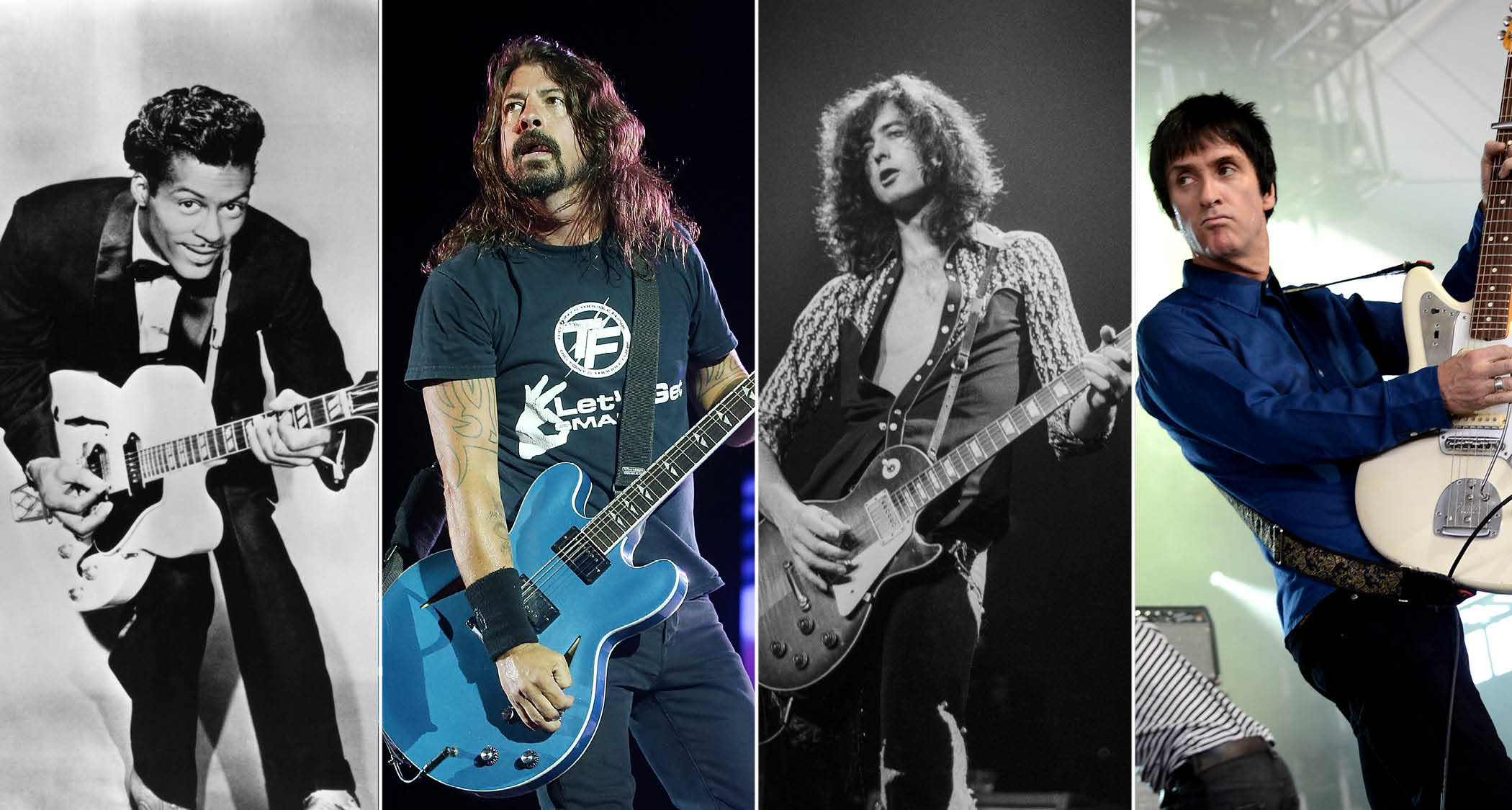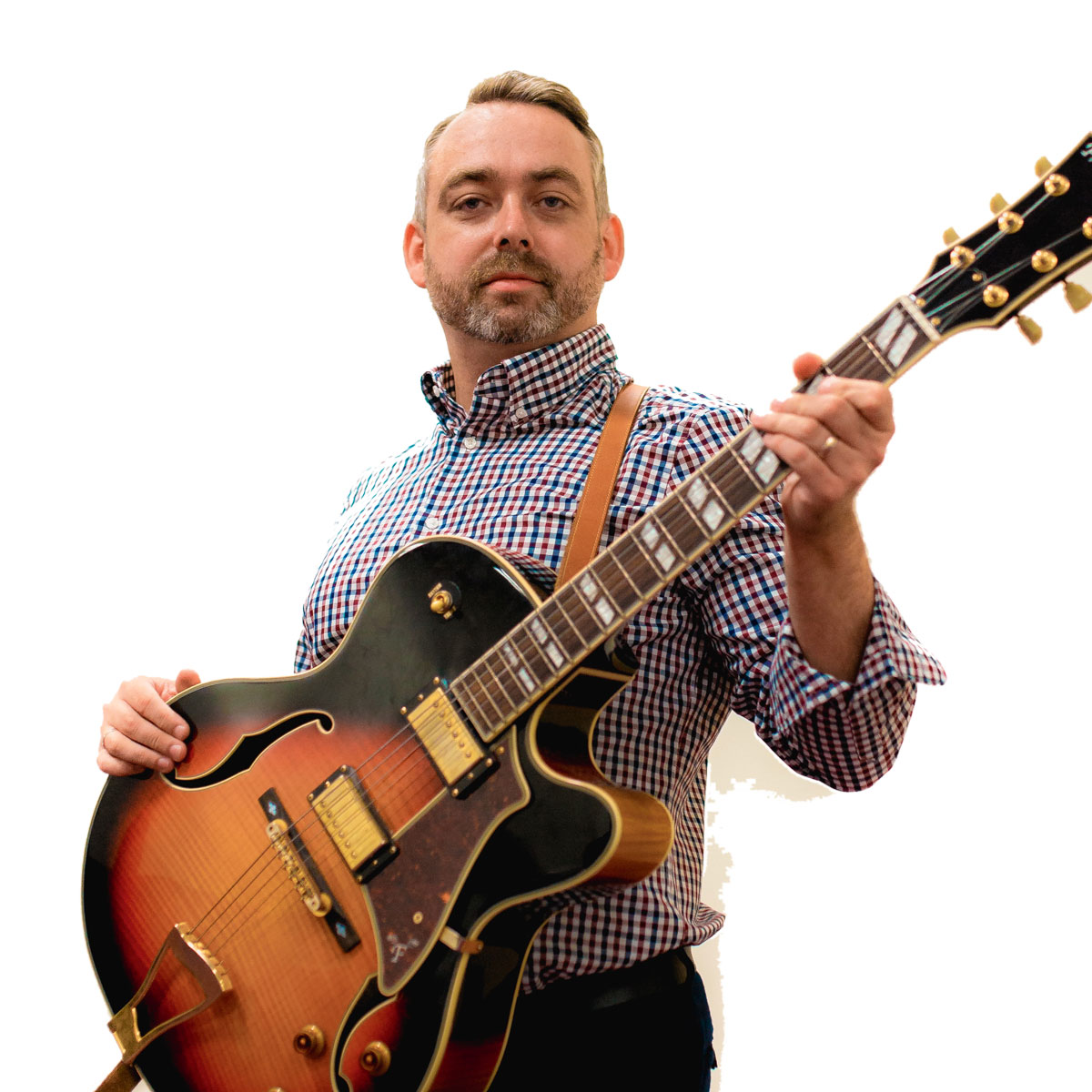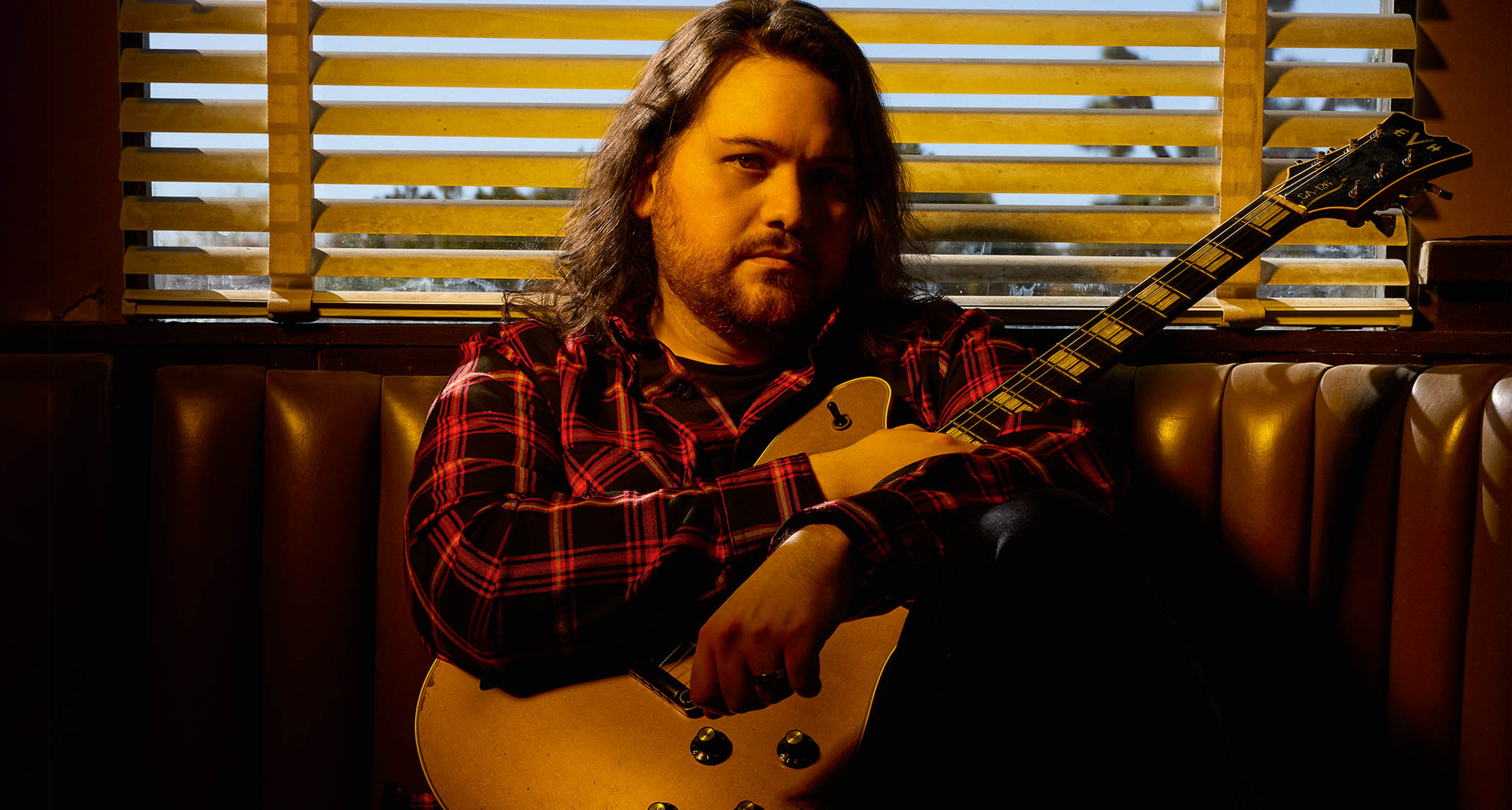The guitar riff changed the course of popular music in the 1950s and remains a powerful force today – we chart its development over the decades, and what you can learn from its evolution
From Chuck Berry to Dave Grohl via Johnny Marr, Jimmy Page and more, this rhythm guitar masterclass offers a decade-by-decade study in the evolution of the riff

The guitar is one of the most popular instruments of all time. Ever since Les Paul and Leo Fender put their names on some of the first ever solidbody electric guitar lines in the 1940s and ’50s, the instrument has become a huge part of pop culture, and maintained this status ever since.
Along with the development of amplification and effects, the electric guitar is one of the most important developments in 20th century music. Amplifiers allowed guitarists to step out of their traditional accompaniment role and provide solos and riffs that could cut through the band with ease.
Since the ’50s and even before, riffs have held legendary status among players and fans alike. A great guitar riff makes the song memorable, and has helped plenty of guitarists become heroes in the process.
The riff can take many forms, which you will see throughout the following seven mini pieces, covering a range of playing styles over the last 70 years. Single-note riffs have been common in all styles of music, with double-stops employed to add a little more output to the texture.
Riffs can be chordy, too, whether it’s overdriven powerchords or arpeggiated triads and extensions. Effects have also played their part, with players from Jimi Hendrix to The Edge using new sounds to create something different.
Two of the most popular scales for creating riffs are the minor pentatonic (R-b3-4-5-b7) and blues scale (R-b3-4-b5-5-bb7). These appear throughout our study across all decades, sometimes with the inclusion of additional chromatic passing notes.
The Mixolydian mode (R-2-3-4-5-6-b7) is a popular choice to play over dominant 7th chords and major triads, with the major pentatonic (R-2-3-5-6) another great scale to employ in major keys. The natural minor (R-2-b3-4-5-b6-b7) is often used for riffs of a heavier persuasion.
All the latest guitar news, interviews, lessons, reviews, deals and more, direct to your inbox!
The following six decade study pieces show how guitar riffs have been employed from the 1950s through to the 2000s. You will learn a lot from rhythmic approaches through to harmonic ideas.
As this feature is full of tips, make sure you come up with your own riffs too. While the best ones maybe already recorded, you might just create the next Smoke on the Water or Black Dog!
Example 1. ’50s study piece
The first two sections of this study piece feature single-note lines in the style of Eddie Cochran and John Lee Hooker. Scales used are the Mixolydian mode (with added b3) and minor pentatonic respectively.
A double-stop Chuck Berry line follows, utilising the Mixolydian mode, a huge part of Berry’s vocabulary. A Buddy Holly-style riff in diatonic 3rds follows, before a Bo Diddley example shows how chords can be used to create rhythmical and memorable riffs.
Example 2. ’60s study piece
The Mixolydian mode kicks off the ’60s with a riff inspired by The Beatles. The Rolling Stones feature in the next example with a single-string minor pentatonic riff. Both of these examples use major and minor 3rds, which is common in many styles. Powerchords feature next, with an idea inspired by The Kinks, who had several hits built around this approach.
Eric Clapton fused chords and single notes to create some memorable licks, often featuring bluesy bends, while Jimi Hendrix took this idea further with added fuzz. Both of these licks are mainly built around the E blues scale (E G A Bb B D).
Example 3. ’70s study piece
A Ritchie Blackmore-style minor pentatonic double-stop riff kicks off the ’70s piece with a Jimmy Page-inspired blues scale riff following. Funk was big in the ’70s. The James Gang, featuring Joe Walsh on guitar, fused funk and rock to create syncopated chordy riffs as seen in the next example.
Joe Perry and Brad Whitford from Aerosmith took influence from the syncopation of funk to create some classic riffs, as found in the next lick, while even the likes of Tony Iommi from Black Sabbath wrote some excellent single-note syncopated riffs, alongside his legendary crushing powerchord lines.
Example 4. ’80s study piece part 1: Brit-rock
The guitar riff took on different forms in the ’80s in the UK and Ireland. The use of chorus was popular, and is featured in all the following examples. Johnny Marr from The Smiths famously used double-stops and arpeggios to create era-defining riffs, as in the first example.
Porl Thompson and Robert Smith wrote some great riffs for The Cure using single-note lines and open drones, while The Edge from U2 used delay to forge his unique sound. One of the decade’s top guitarists, The Police’s Andy Summers used sus2 and add9 chords to shape his identity, while Billy Duffy from The Cult used chorus, overdrive, blues licks, and open-string drones.
Example 5. ’80s study piece part 2: Hard rock
The ’80s was also the decade of virtuosic heavy metal. Mick Mars from Mötley Crüe combined the minor pentatonic with double-stops to create some of the era’s top riffs.
Paul Gilbert from Racer X showcased his guitar skills with three-notes-per-string licks, strong alternate picking with a tight, palm-muted playing style. Joe Satriani took the ’80s by storm with his prowess, often using various modes along with pentatonic scales to create fabulous rocky riffs.
George Lynch would often use pedal tones to write slick, single-string minor key riffs, drawing on the b6 and sometimes b2. Jake E Lee, during his time with Ozzy Osbourne, used double-stops and palm-muted open strings to create influential metal-style riffs as seen in this final example.
Example 6. ’90s study piece
Grunge was a huge part of the ’90s, changing the approach of guitar playing considerably. This study piece uses drop D tuning throughout. The opening Nirvana-style syncopated riff is followed by Alice In Chains and Soundgarden influenced ideas, which alternate between 7/8 and 4/4 time signatures.
Ty Tabor of King's X wrote some superbly creative riffs using multiple chord shapes alongside single-finger drop D chords, as found in the next example. This piece closes with pentatonic riffing styled after Rage Against the Machine, which shows their guitarist Tom Morello’s ’70s influence.
Example 7. 2000s study piece
Jonny Buckland has created many melodic guitar riffs for Coldplay. This first example shows how he might use the minor pentatonic scale with added reverb and delay to forge a great guitar hook.
Our second example shows how Dave Keuning from The Killers used arpeggios as the backbone for songs that powered the decade’s pub-rock and wedding band circuit.
Over in the UK, Arctic Monkeys often exploited the b5 within the blues scale to write angular riffs, while Kings of Leon created stadium-worthy riffs as seen in this powerchord based example.
Dave Grohl and his band Foo Fighters are still flying the flag for the guitar riff, as our final example shows. Grohl’s drumming background in Nirvana was no doubt a component to his rhythmically syncopated guitar hooks.
Simon is a graduate of the UK's Academy of Contemporary Music and The Guitar Institute, and holds a Masters degree in music. He teaches, examines and plays everything from rock to jazz.



